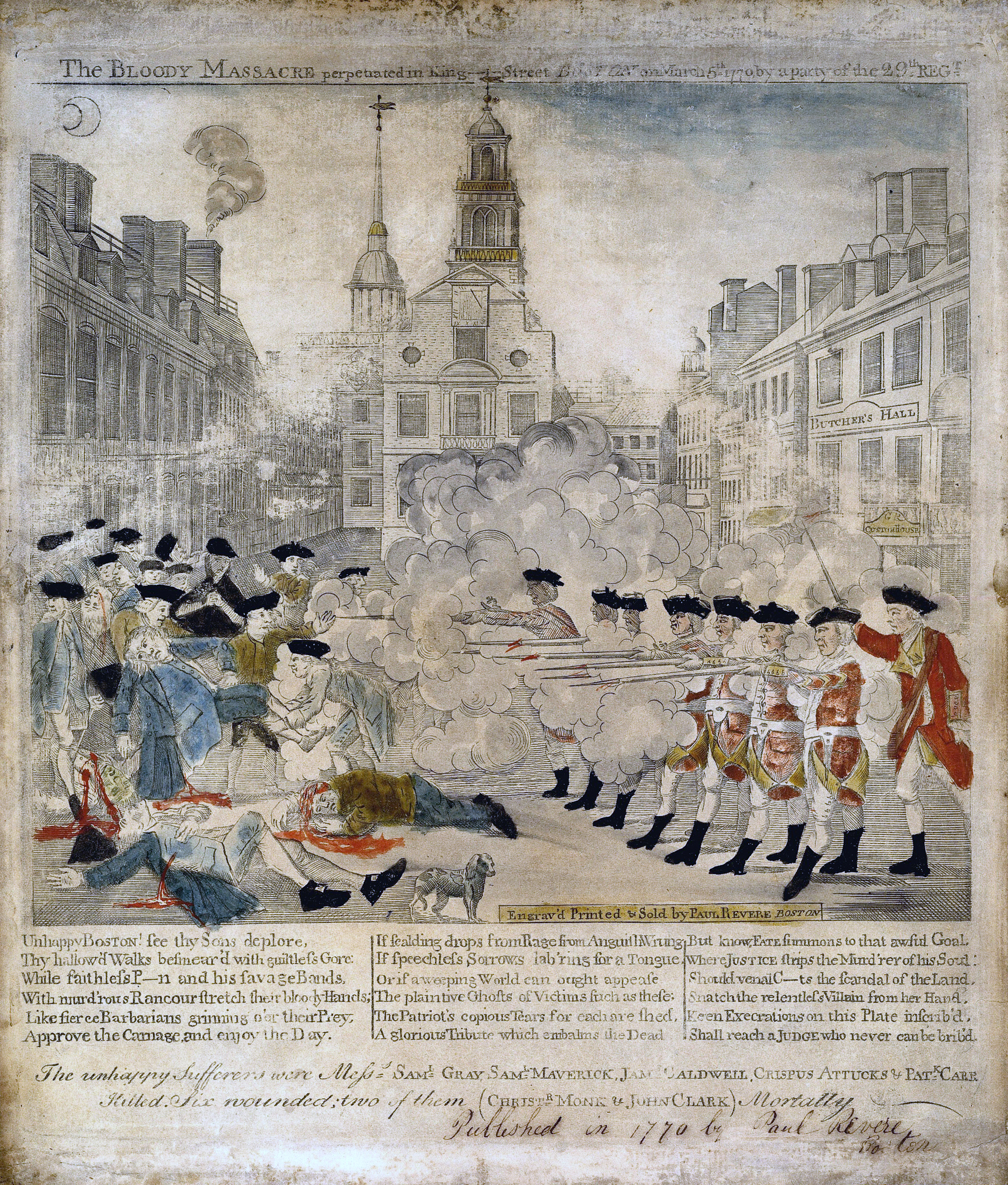Edward Garrick on:
[Wikipedia]
[Google]
[Amazon]
Edward Garrick (spelled Gerrich and occasionally Gerrish according to some historical documents) was an American
 During the evening of March 5, 1770, a drunk Edward Garrick and his fellow wigmaker's apprentice Bartholomew Broaders were among a crowd of local youth taunting and throwing snowballs at John Goldfinch, a captain-lieutenant of the British Army. They had arrived here after crossing paths with Goldfinch after escorting Ann Green and Mary Rogers to the now-famous Boston Custom House. Hugh White, a British private of the
During the evening of March 5, 1770, a drunk Edward Garrick and his fellow wigmaker's apprentice Bartholomew Broaders were among a crowd of local youth taunting and throwing snowballs at John Goldfinch, a captain-lieutenant of the British Army. They had arrived here after crossing paths with Goldfinch after escorting Ann Green and Mary Rogers to the now-famous Boston Custom House. Hugh White, a British private of the
wigmaker
A wig is a head or hair accessory made from human hair, animal hair, or synthetic fiber. The word wig is short for periwig, which makes its earliest known appearance in the English language in William Shakespeare's ''The Two Gentlemen of Verona' ...
's apprentice and resident of Boston, Massachusetts, who is known for instigating the Boston Massacre on March 5, 1770.
Early life
Not much is known about Garrick's early childhood, but he was 13 years old when the Boston Massacre took place. Thirteen was a common age for boys to become apprentices in the 18th century, and Garrick was an apprentice at the time of the Massacre. Around 1770, he was employed by John Piemont, a wigmaker and later tavern-keeper. That same year, King George III of the United Kingdom sent 2,000 British soldiers to Boston who became frequent clients of Piemont. It is likely Garrick and other apprentices tended to the wigs of these soldiers six days a week, as that was the average for workers in 1770. During early March 1770, Garrick also worked as an escort for Ann Green and Mary Rogers, the daughter and maid of Boston customs official Bartholomew Green.Role in 1770 Boston Massacre
 During the evening of March 5, 1770, a drunk Edward Garrick and his fellow wigmaker's apprentice Bartholomew Broaders were among a crowd of local youth taunting and throwing snowballs at John Goldfinch, a captain-lieutenant of the British Army. They had arrived here after crossing paths with Goldfinch after escorting Ann Green and Mary Rogers to the now-famous Boston Custom House. Hugh White, a British private of the
During the evening of March 5, 1770, a drunk Edward Garrick and his fellow wigmaker's apprentice Bartholomew Broaders were among a crowd of local youth taunting and throwing snowballs at John Goldfinch, a captain-lieutenant of the British Army. They had arrived here after crossing paths with Goldfinch after escorting Ann Green and Mary Rogers to the now-famous Boston Custom House. Hugh White, a British private of the 29th Regiment of Foot
The 29th (Worcestershire) Regiment of Foot was an infantry regiment of the British Army, raised in 1694. Under the Childers Reforms it amalgamated with the 36th (Herefordshire) Regiment of Foot to become the 1st Battalion, the Worcestershire Reg ...
on guard by the Custom House
A custom house or customs house was traditionally a building housing the offices for a jurisdictional government whose officials oversaw the functions associated with importing and exporting goods into and out of a country, such as collecting c ...
, overheard this and arrived to aid Goldfinch as Garrick mocked the captain-lieutenant for his negligence to pay a bill due to one of the apprentices of John Piemont, which, in fact, had been paid. When White yelled at Garrick, telling him to show more respect to Goldfinch, Garrick responded only with an exchange of insults and a poke. Fed up, White struck Garrick in the head with his musket, causing him to fall and cry out in pain. Upon this, Broaders and other youths began to argue with White and insult him, drawing a large crowd of civilians. Garrick, bleeding, fled to a British barrack, where he spread the word of his injury to a crowd in front of it. This crowd included John Green, a Bostonian tailor who would later testify at the Boston Massacre trials. Meanwhile, the chaos that was ongoing at the Custom House resulted in the Massacre.
After the Massacre
Bartholomew Broaders gave a short account of what happened the evening of March 5 in which Garrick is mentioned talking to British soldier Sergeant Daniels before the Massacre. Broaders' story was published in 1775 and found online. Garrick was first to testify at the Queen Street Courthouse, where Thomas Preston was charged for manslaughter at the Massacre. At the trial, Garrick said only the following: There are no later records describing of Garrick's later life and death, and he is not listed in ''Massachusetts Soldiers and Sailors in the War of the Revolution,'' a historical document listing Massachusetts soldiers serving in the American Revolution. A book entitled ''The United States Declaration of Independence (Revisited)'' is one of the few sources that acknowledges his role in the Massacre.References
{{DEFAULTSORT:Garrick, Edward 18th-century American people Boston Massacre People of Massachusetts in the American Revolution 1750s births American children 18th century in Boston People from Boston Child deaths